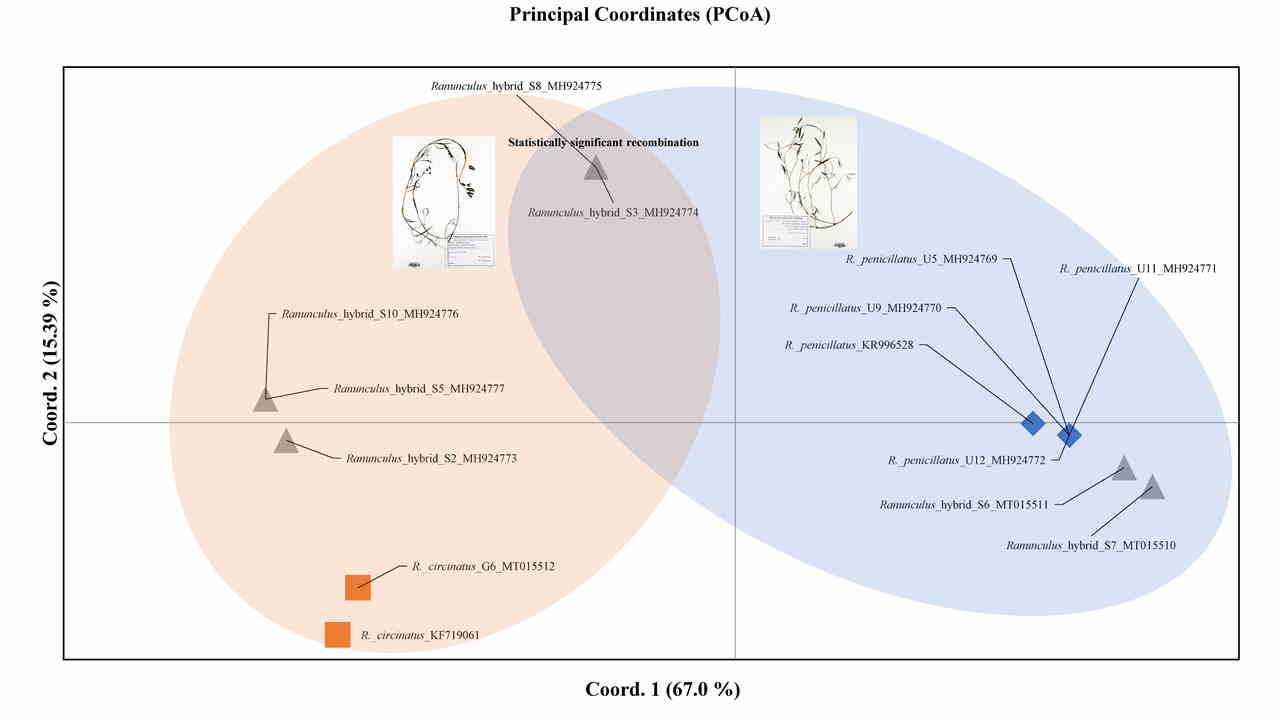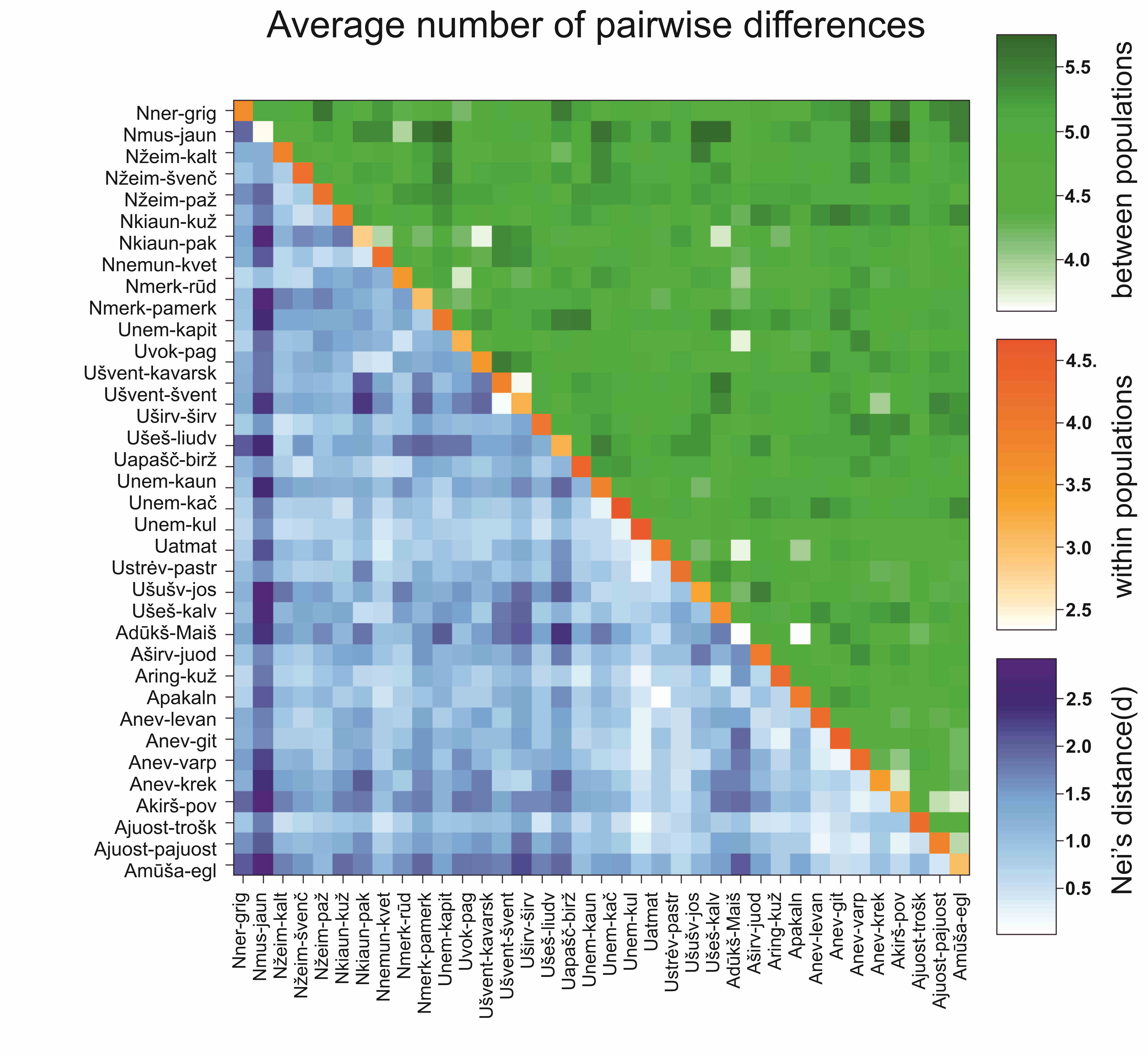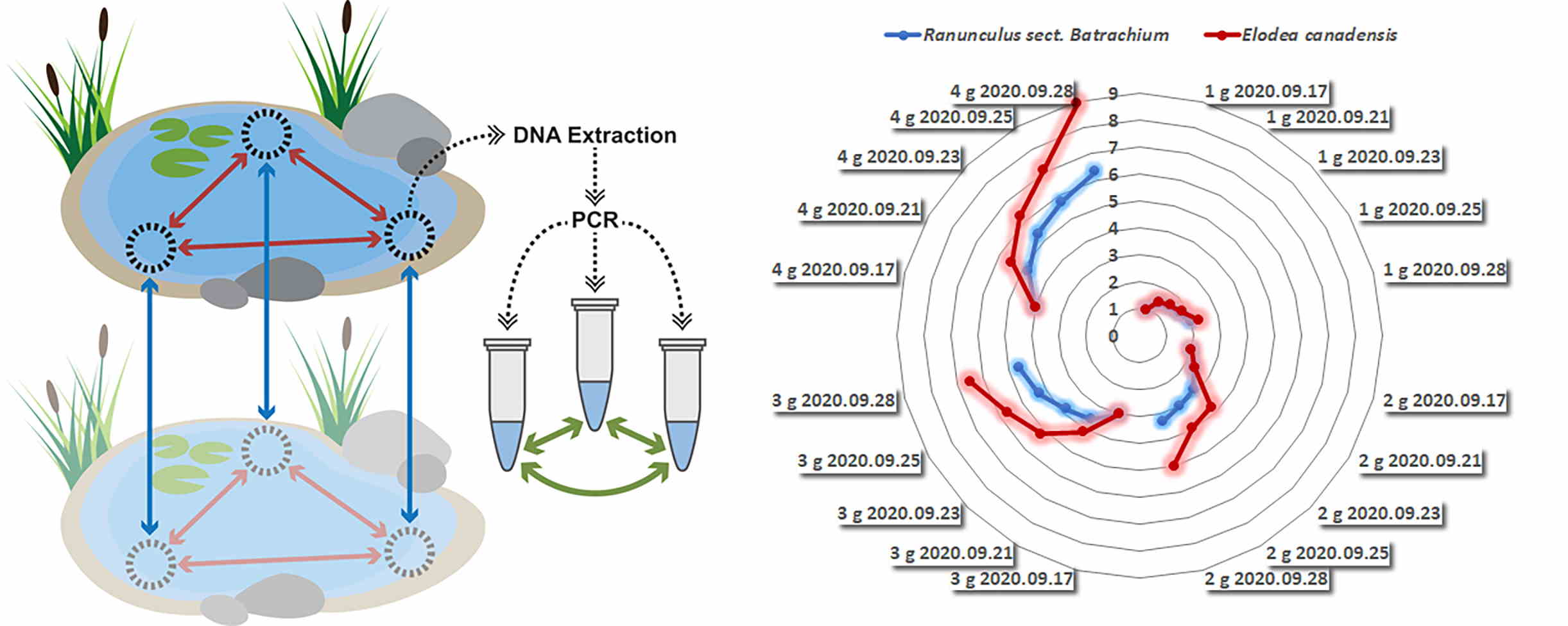|
DONATAS ŽVINGILA |
|
Plants as model systems are widely used in molecular-genetic, developmental and environmental studies. The progress of molecular marker techniques and the sequencing of the Arabidopsis genome began the era of plant genomics. However, little is known about the mechanisms that help plants survive and adapt to local and global environmental changes, and how these factors affect the plant’s genome and gene expression. Many adaptation and developmental features have their chemical expressions related to the production of phytohormones, secondary metabolites and signalling molecules. However, chemical changes in the cell and whole organism are controlled by the structure and activity of the genome, its genes and epigenetic changes. Comprehensive studies of plant adaptation strategies should be carried out at the cell, individual and population level. DNA analysis reveals the relationship between the plant genome structure and its functioning as well as the survival and adaptation strategies of the plants. On the other hand, plants have unique developmental and reproductive features; they maintain a close relationship with the soil and its microflora. Therefore, they are often used as a test system to assess the ecological status of the environment, for phytoremediation and as producers of various metabolites.
We studied the natural and induced plant genome variability at the cell, organism and population levels using molecular, biochemical, statistical and bioinformatical methods. One of the traditional trends in our laboratory is studies of barley developmental mutants. Study of lines derived from different cross-combinations confirmed the triggering effect of tweaky mutations on the induction of genetic instability, which may occur due to pleiotropic auxin action in tw mutants on the expression of genes related to developmental processes [1]. Another aspect of our investigation concerns plant evolution and ecology with particular interest on the phenomena of invasiveness and hybridization. Our study confirmed the hybridogenic origin of distinctive Batrachium genotypes [2] and the role of the multiple introductions on the invasiveness of Bunias orientalis in two climatically different zones [3]. Some of our studies [2–5] were carried out in collaboration with colleagues from other Lithuanian research institutions and abroad. Our team has also a lot of experience in the field of genotoxicity studies on soil contamination by hazardous environmental pollutants using Tradescantia clone #4430 and other test-systems [5].
SELECTED PUBLICATIONS
- Šiukšta, R., Vaitkūnienė, V., Rančelis, V. Is auxin involved in the induction of genetic instability in barley homeotic double mutants? Planta. 2018, 247(2): 483–498.
- Butkuvienė, J., Sinkevičienė, Z., Naugžemys, D., Žvingila, D., Skridaila, A., Bobrov A. A. Genetic diversity of aquatic Ranunculus (Batrachium, Ranunculaceae) in one river basin caused by hybridization. Plants. 2020, 9: 1455.
- Vaitkūnienė, V., Šiukšta, R., Leistrumaitė, A., Rančelis, V. Prospective use of barley spike/flower homeotic single and double mutants for ornamental purposes. Euphytica. 2019, 215: 127.
- Patamsytė, J., Naugžemys, D., Čėsnienė, T., Kleizaitė, V., Demina, O. N., Mikhailova, S. I., Agafonov, V. A., Žvingila, D. Evaluation and comparison of the genetic structure of Bunias orientalis populations in their native range and two non-native ranges. Plant Ecology. 2018, 219: 101–114.
- Šiukšta, R., Bondzinskaitė, S., Kleizaitė, V., Žvingila, D., Taraškevičius, R., Mockeliūnas, L., Stapulionytė, A., Mak, K., Čėsnienė, T. Response of Tradescantia plants to oxidative stress induced by heavy metal pollution of soils from industrial areas. Environmental Science and Pollution Research. 2019, 26: 44–61.
Genetic Diversity of Aquatic Ranunculus (Batrachium, Ranunculaceae) in One River Basin Caused by Hybridization
Aquatic Ranunculus (sect. Batrachium) include both homophyllous and heterophyllous plants. The development of floating leaves may be induced by genetic mechanisms or/and environmental conditions, and this fact complicates the morphologically based identification of species. DNA-based studies provide the opportunity to expand the knowledge of this complicated group. We studied heterophyllous Ranunculus with well-developed capillary and intermediate leaves and visually homophyllous plants with capillary leaves with the aim to evaluate their genetic polymorphism and taxonomic status: whether the plants with well-developed and weakly expressed intermediate leaves belong to different forms (taxa) or they just express morphological variation of one or two taxa in a specific, highly variable river environment. The molecular analysis did not reveal any inter simple sequence repeat (ISSR) polymorphism associated with the development of intermediate leaves. Analysis of nuclear ribosomal internal transcribed spacers ITS1–2 sequences revealed several ribotypes, which indicated the genetic heterogeneity of the plants studied and indirectly confirmed the hybrid origin of some of them. Hybrid sterile plants between R. circinatus and R. penicillatus were discovered in the Skroblus River; however, identification of the parental species was impeded by the polymorphism detected. For this reason, cytological studies were performed and allowed confirmation of this hybrid (Butkuvienė et al. Plants. 2020, 9: 1455).

Fig. 1. Principal coordinate analysis of supposed parental species (R. circinatus (orange) and R. penicillatus (blue) and Ranunculus hybrid from the Skroblus River (grey).
Genetic Structure of Lithuanian Nuphar lutea River Populations
Currently, in Europe, increasing attention is being paid to the genetic diversity of aquatic macrophytes. Insufficient information exists about the river plants of the Baltic States. Our study aimed to evaluate the genetic diversity of Nuphar lutea individuals growing in the Lithuanian watercourses. The populations were studied in the river catchments of Lithuania: the Nemunas, the Venta and the Lielupė. The genetic structure of the populations was evaluated at microsatellite loci. The population genetic data of N. lutea were analysed by multiple tests, including hierarchical analysis of molecular variance (AMOVA), principal coordinate analysis (PCoA) and the Mantel test. The observed (HO) and expected (HE) heterozygosity values per population were at the corresponding intervals: 0.242–0.655 and 0.503–0.759. Our study revealed significant differentiation among populations (FST=0.162; p<0.001) and a lack of correlation between genetic and geographical distances; this outcome is in agreement with increased inbreeding in populations and implies limited gene flow among subcatchments. Our results also indicate that land-use type in the areas surrounding the river may have an effect on the genetic diversity pattern of N. lutea populations. (Vyšniauskienė et al. Aquat. Bot. 2020, 131: 103173).

Fig. 2. Genetic differentiation between Lithuanian populations of Nuphar lutea based on nuclear microsatellite data and revealed using Arlequin v3.5.2.2.

